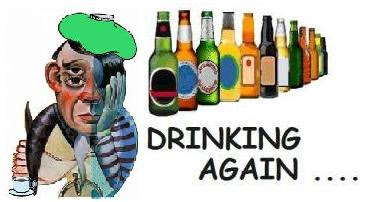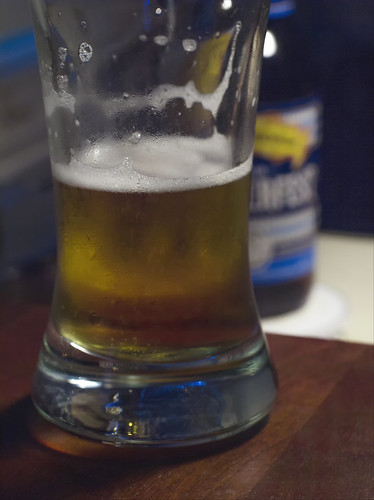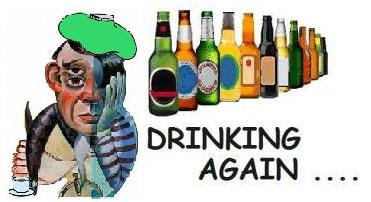Heavy Seas Brewing's Red Sky at Night Saison, served on draught (with a side scoop of hummus) at My Parents' Basement (a combination good-beer pub, graphic novel shop, and arcade game parler) in the City of Avondale Estates, Georgia, USA (some 570 miles south of the brewery).
22 July 2025.
***************
About Red Sky at Night
Heavy Seas is a thirty-year-old 'craft' brewery, founded in 1995 (née Clipper City Brewing) in Baltimore County, Maryland, USA. The Red Sky at Night appears to be a limited re-release for the brewery's anniversary. Here's the brewery's description of the beer in 2010, when it was an annual spring release:
Brewed in the style of Belgian farmhouse ales – using a unique Belgian yeast and authentic Belgian candi sugar. It is a potent and spicy ale with deep complexity. Pairs well with Thai cuisine and mussels.
- ABV: 7.5% [alcohol by volume]
- IBUs: 17.5 [international bittering units]
- Hops: French Strisselspalt
- Malts: Pale, 2-Row, Wheat Malt
My impression (now, in 2025):
The beer poured with a pleasantly hazy appearance, typical of the saison style. In flavor, there were hints of spice (such as anise), notes of candi sugar fusel alcohols, and a 'red delicious' apple character. Tasty!
My Parents' Basement mistakenly, but humorously, referred to the beer as Red Rum Sky at Night, mixing a cinematic horror allusion with a nautical aphorism (quoted above). To be fair, so had the beer-review app, Untappd.
About Saison
(pronounced: "say ZAWWN")Beers in this category are gold to light amber in color. Often bottle-conditioned, with some yeast character and high carbonation. Belgian-style saison may have Brettanomyces or lactic character, and fruity, horsey, goaty, and/or leather-like aromas and flavors. Specialty ingredients, including spices, may contribute a unique and signature character. Commonly called 'farmhouse ales' and originating as summertime beers in Belgium, these are not just warm-weather treats. U.S. craft brewers brew them year-round and have taken to adding a variety of additional ingredients.— CraftBeer
a website of the [U.S.] Brewers Association
No scores; only descriptions.


















